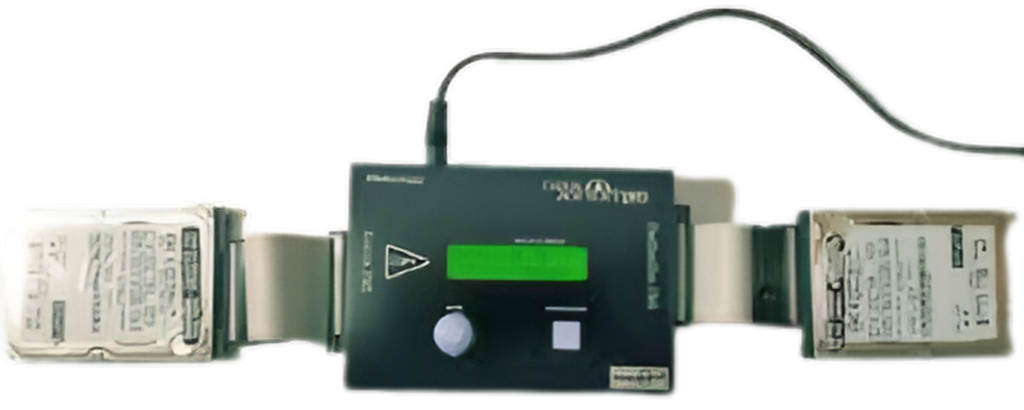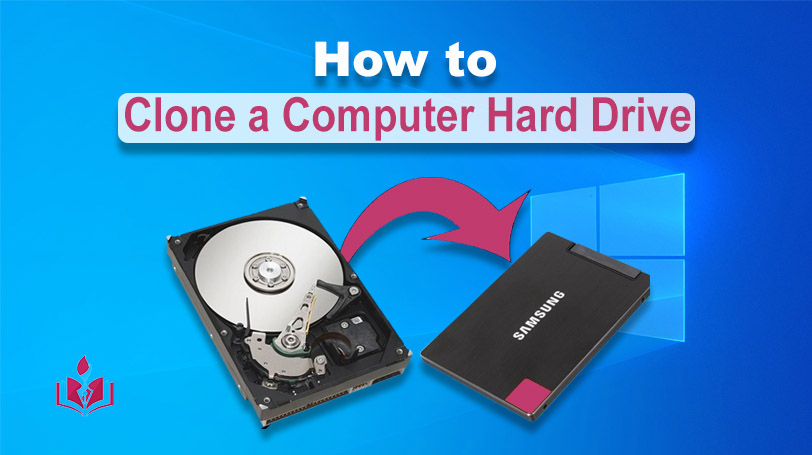Are you someone who want to migrate or replace the data from one drive to another? one such way is to clone up hard drive from your computer. It allows you to copy the exact file from the operating system and create a complete backup.
If you want to proceed but don’t know how to clone a computer hard drive efficiently, you’ve come to the right place.
Lets Start!
What is Clone a Computer Hard Drive?
In essence, hard drive cloning means replicating an entire hard drive on another, making it a mirror image of the original. It’s particularly useful when preserving your entire system, applications, and data as they exist on one drive. This method differs from regular data backup, which merely saves files. Cloning creates a functional, ready-to-use copy of your system for seamless operation.
When Should You Clone a Computer Hard Drive?
It would be best to consider hard drive cloning in system upgrades, data security, disaster recovery, or system migration scenarios. It ensures that your important data and settings remain intact and ready for quick retrieval in emergencies or upgrades.
Benefits of Cloning a Computer Hard Drive
The benefits of hard drive cloning are numerous. It provides a safe backup for your system, ensuring minimal downtime during hardware failures. Furthermore, it simplifies the migration to a new drive or computer, preserving the familiarity of your existing setup. The benefits extend to consistency across multiple workstations, especially in business settings.
Types of Cloning a Computer Hard Drive
Hard drive cloning primarily falls into two categories.
Software Cloning
Software cloning employs user-friendly programs to replicate your hard drive. It’s a popular choice due to its accessibility, with software options available for various skill levels.
Hardware Cloning
On the other hand, hardware cloning requires dedicated devices designed for the cloning process. These devices offer a physical solution for duplicating hard drives.
How to Clone a Computer Hard Drive Using Software
Here’s a brief overview of cloning your hard drive using software.
Step 1. Choose a Cloning Software
Start by selecting reliable cloning software such as EaseUS Todo Backup or Acronis True Image, renowned for their comprehensive features and user-friendly interfaces.
Step 2. Connect the Target Drive
Connect your new target drive to your computer, ensuring it has sufficient capacity to accommodate the data from the source drive.
Step 3. Select the Source and Target Drives
Designate the source drive (the one to be cloned) and the target drive (where the clone will reside) in your chosen cloning software.
Step 4. Start the Cloning Process
Initiate the software’s cloning process, which will copy the data from the source drive to the target drive.
Step 5. Wait for the cloning process to complete
Be patient during the cloning process, as the duration may vary based on the data’s size and your hardware’s capabilities.

Clone a Computer Hard Drive Using Hardware
How to Clone a Computer Hard Drive Using Hardware
If you prefer hardware cloning, follow these steps:
Step 1. Connect the Source and Target Drives to the Cloning Device:
Use a dedicated hardware cloning device to link the source and target drives securely.
Step 2. Start the Cloning Process:
Follow the device’s instructions to commence the cloning process, which typically involves the press of a button.
Step 3. Let the cloning process complete:
Like software cloning, allow the hardware device to complete the process.
Troubleshooting – Clone a Computer Hard Drive
While hard drive cloning is usually straightforward, you might encounter a few common problems:
Common Hard Drive Cloning Problems
Issues like a failed cloning process, unbootable cloned drives, or drives not recognized by the computer can occur.
How to Fix Hard Drive Cloning Problems
Solving these problems may involve retrying the cloning process, verifying hardware connections, or seeking assistance from the software or device’s support teams.
Tips for Cloning Your Hard Drive
As you embark on the journey of hard drive cloning, consider these helpful tips to streamline the process:
- First, ensure that your source and target drives have sufficient storage capacity. Enough room on the target drive is essential to accommodate all the data from your source drive.
- Before initiating the cloning process, back up any critical data from your source drive. While cloning is generally reliable, having an extra layer of protection is a good practice.
- Verify that the chosen cloning method, whether software or hardware, is compatible with your specific hard drives and computer system.
- Double-check your connections during hardware cloning. Ensure the cables are securely connected to prevent interruptions.
- After successful cloning, regularly update and maintain your clone to keep it up-to-date with any changes or updates to your source drive.
Final Thoughts
Cloning hard drives is a sensible and versatile technique to shield your information and device’s integrity. Whether you pick a software program or hardware cloning, the potential to copy your hard drive gives peace of thought, efficient enhancements, and seamless facts recovery in unexpected circumstances.
Remember to pick out the high-quality approach in your desires, and you may be properly on your manner to getting to know the artwork of hard drive cloning.
FAQs
Hard drive cloning copies the entire drive, including the operating system, making it a bootable replica. Data backup only stores files and folders, requiring restoration.
While data backups are crucial, hard drive cloning ensures a complete system replica, ideal for rapid recovery and system migration.
Troubleshoot by checking connections, ensuring compatibility, and verifying boot sector copying. If issues persist, consult your cloning software or hardware support.


1 Comment
Wonderful beat I wish to apprentice while you amend your web site how could i subscribe for a blog web site The account aided me a acceptable deal I had been a little bit acquainted of this your broadcast provided bright clear idea